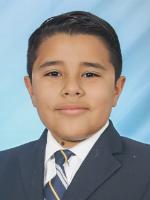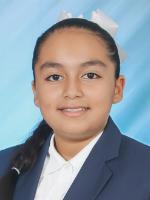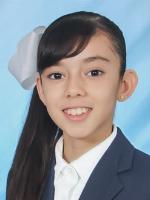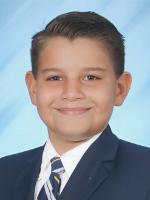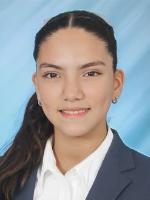
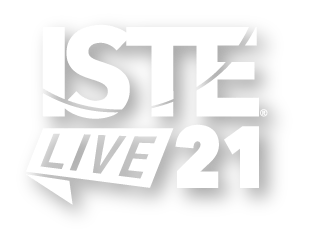
Scratch, Meow & Maker: Digital Panel of Emotions, Motor and Language Disabilities |
Participate and share : Poster
Emiliano Miranda Ramírez Zabdi Mendoza Ramírez Alondra Lezama León Carlo Guzmán Salcedo Paola Hernández Compañ González Sofia Avila Cuevas
Learn how students lend their voice to provide a solution for people with motor and language disabilities to express their emotions. Applying design thinking, they create a digital panel controlled by Scratch and a Meow card, which shows in a large format the emotions and basic needs.
| Audience: | Coaches, Teachers, Technology coordinators/facilitators |
| Skill level: | Beginner |
| Attendee devices: | Devices required |
| Attendee device specification: | Smartphone: Android Laptop: Chromebook |
| Participant accounts, software and other materials: | https://scratch.mit.edu/ https://sites.google.com/ https://www.genial.ly/es Digital panel |
| Topic: | Computer science & computational thinking |
| Grade level: | 6-8 |
| Subject area: | Computer science, STEM/STEAM |
| ISTE Standards: | For Students: Innovative Designer
|
| Additional detail: | Student presentation |
PURPOSE:
Participants will learn that people with disabilities have emotions that deserve to be heard, and that communication with their families, staff who assist them and teachers is essential.
They will know how our students become innovative designers when developing a project identifying the global problem of people with motor and language disabilities to express their emotions, since it is difficult for them to use applications on electronic devices. Using computational thinking, they create algorithms and develop a prototype of a portable digital panel controlled with a Scratch program and a Meow card. They collect the data through the contact that the user makes with the panel, choosing the image of the emotion to express, and processing this data in the program, which will play an audio with the emotion in the voices of our students. Some emotions or needs can be:
I want to be alone
I need help
I love you
I need company
I am happy
I am angry
I am sad (and others)
Some affirmations: I am loved, I am fantastic, I am important, I am unique, and others.
A special option to listen a pray
OBJETIVES:
-Understand how to develop a project using design thinking
-Show empathy by recognizing that there are people in the world with needs who can improve their quality of life with technology.
-Recognize themselves as creators and innovators, contributors of solutions to real world problems.
-Through computational thinking, students design algorithms to program a solution to the problem in Scratch.
-Use technological resources such as the Meow card that adapt to Scratch and enhance the solutions.
-Collaborate with peers showing respect for contributions and comments.
** The Meow card allows you to receive keystrokes through a conductive medium. This connects to the Laptop and sends the data to the Scratch program, and receives it in the form of letters. You have 10 keyboard letter options to use.
Bitesize, BBD. Introduction to computational thinking. Source: https://www.bbc.co.uk/bitesize/guides/zp92mp3/revision/1
Daniela Grigis and Marco Lazzari. 2013. Augmentative and alternative communication on tablet to help persons with severe disabilities. In Proceedings of the Biannual Conference of the Italian Chapter of SIGCHI (CHItaly '13). Association for Computing Machinery, New York, NY, USA, Article 17, 1–4. DOI:https://doi.org/10.1145/2499149.2499175
Ideo Design thinking. Source: https://designthinking.ideo.com/
Global Nursing, 2018. Emotional intelligence, resilience and self-esteem in people with
physical disability and no disability. Source: http://scielo.isciii.es/pdf/eg/v17n50/1695-6141-eg-17-50-263.pdf
Government of La Rioja. Educational orientation. Source:
https://orientacion.larioja.edu.es/necedidad-ed-especiales/defmotoricos/104-defimoto/190-discamot
Mégret, F. (2008). The disabilities convention: Human rights of persons with disabilities or disability rights?. Human Rights Quarterly, 494-516. Source: https://www.jstor.org/stable/20072851?seq=1
United Nations 2020, Department of Economic and Social AffairsDisability. Source:
https://www.un.org/development/desa/disabilities/convention-on-the-rights-of-persons-with-disabilities.html
